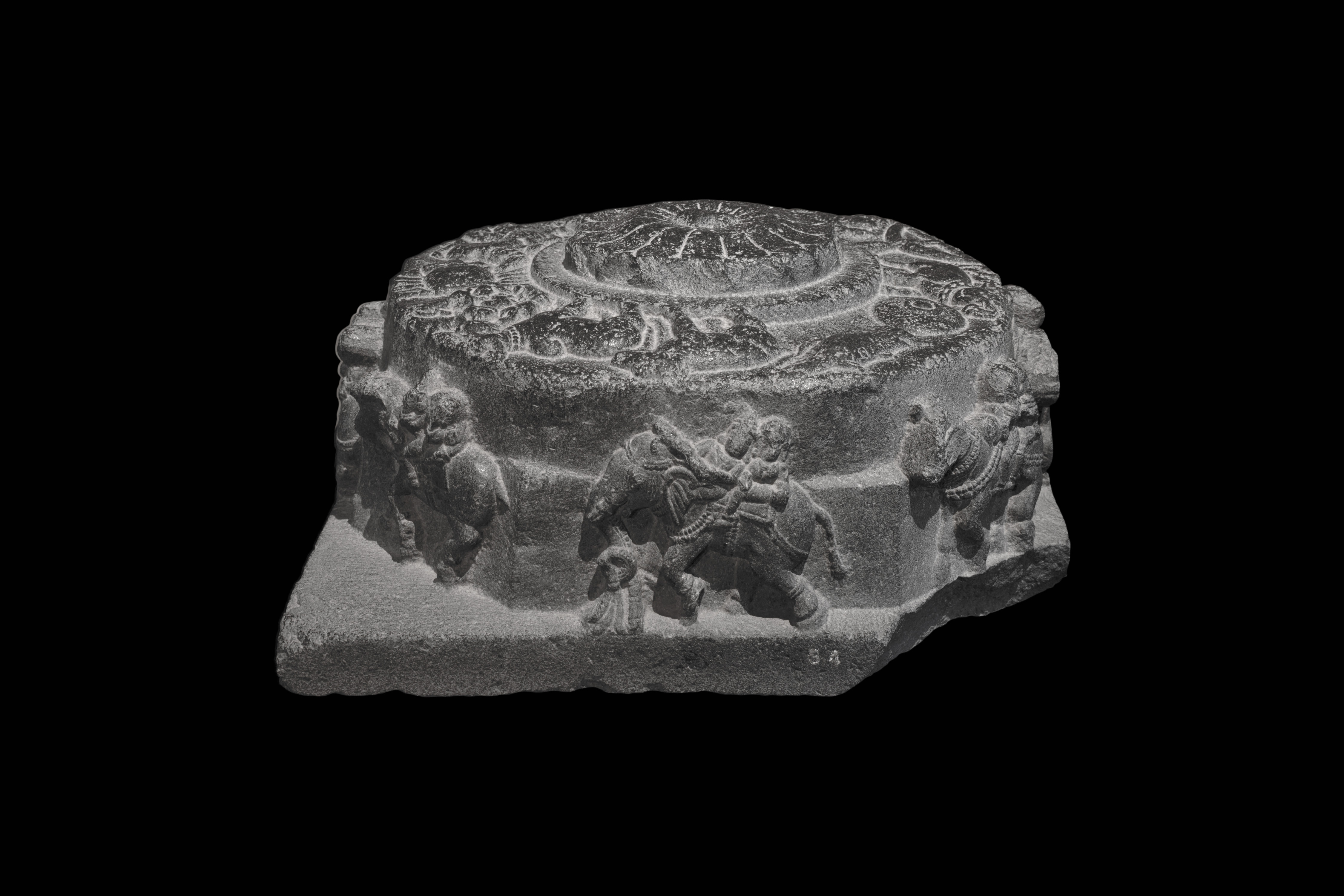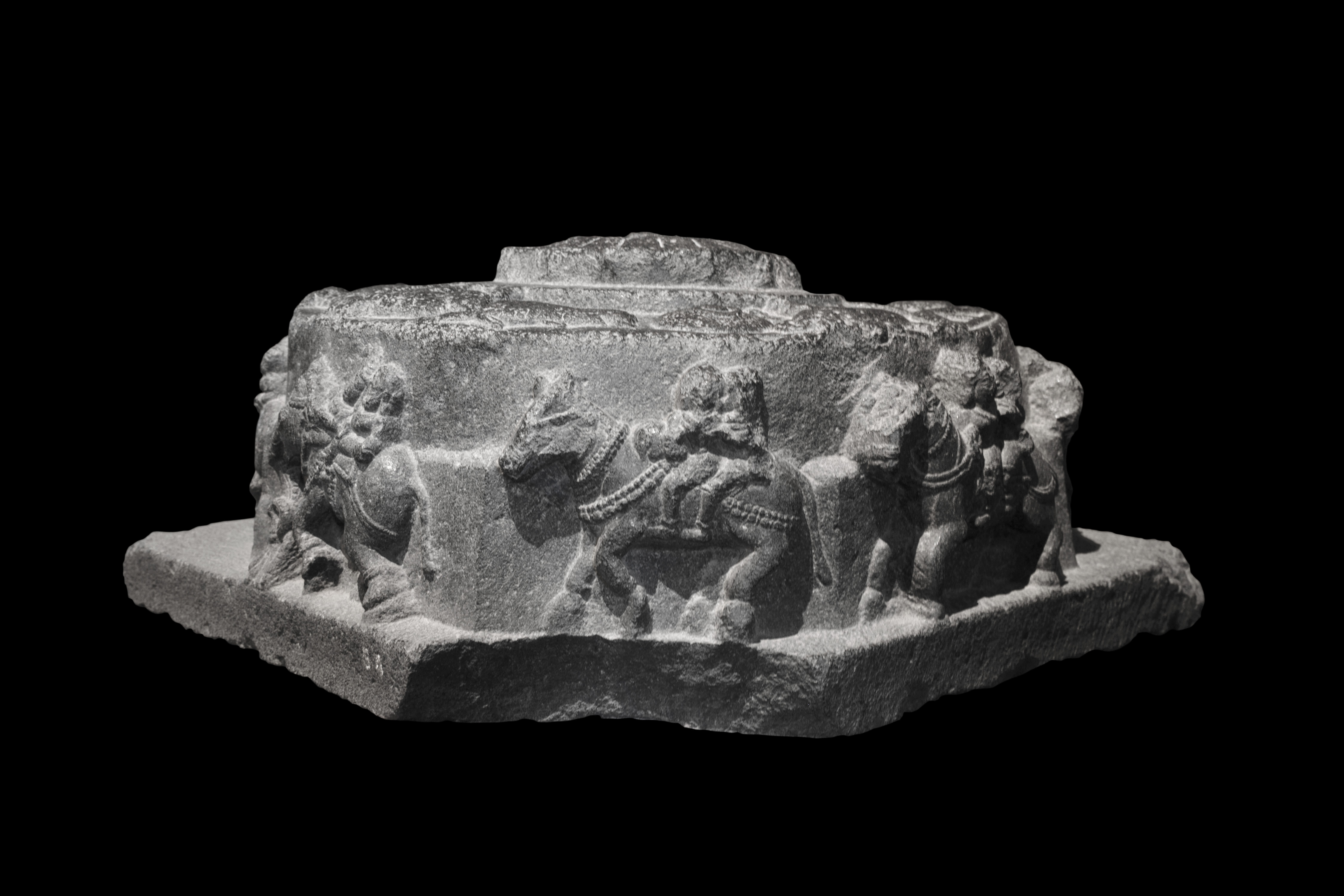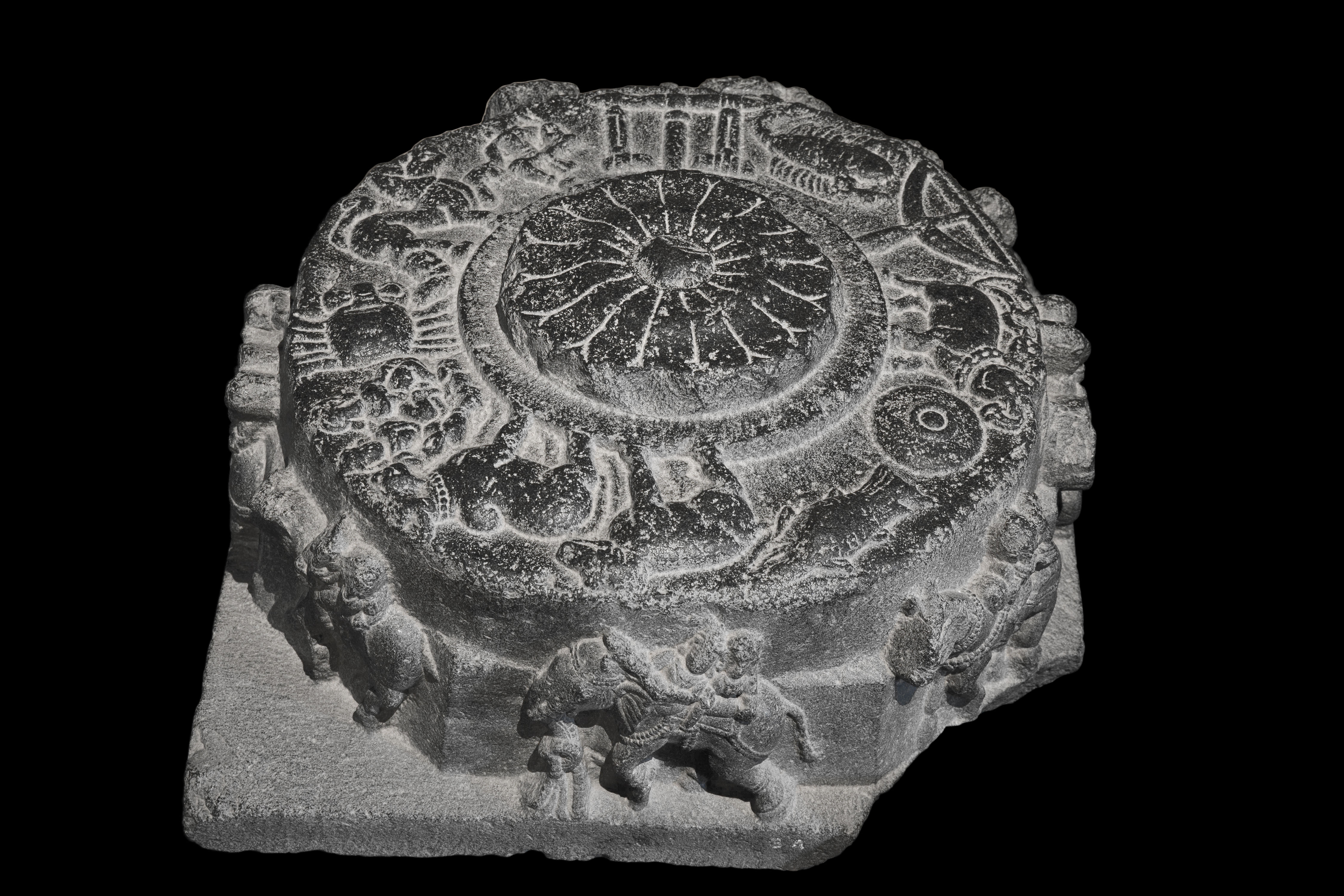Saura Pitha (Symbol of Astronomical Concepts)
Original Location: Andhra Pradesh
Present Location: Chhatrapati Shivaji Maharaj Vastu Sangrahalaya, Mumbai
Date: 13th Century CE
Period: Medieval
Material: Dolerite
Objects: Sculpture
Dimensions: H 26 x W 58 x D 55 cm
Credits: Chhatrapati Shivaji Maharaj Vastu Sangrahalaya, Mumbai
The Saura Pitha is an example of the science of astronomy in India, an area of study from the ancient period. It shows the knowledge of the solar system and the constellations that the Indians had gained by that time. It also points towards the continuity of the Indian civilization as the signs of the constellations which have been made on it still continue to be used in India without any change. Similar Saura Pitha images are also found in the collection of Gwalior Museum which means that such sundials were used in various parts of the country. The use of sun dials for time keeping reached its pinnacle with the construction of the five sundials called the Jantar Mantar in the 18th century with the one in Jaipur giving the local time to an accuracy of 2 seconds. It has been declared a UNESCO World Heritage Site.
The Saura Pitha signifies how science was merged with culture and religion in India. Scientifically, the Saura Pitha tells time and provides directions. The rising and setting of the sun provided directions and its revolution through various radical signs determined the time of the day. Both the correct direction and the right time were computed by drawing a circle on a plain ground with a gnomon fixed in the centre of a circle. The shadow of the gnomon would move proportionately with the movement of the sun and would therefore indicate the time. Culturally, the figures of the planets made on the Saura Pitha also known as the Navagraha are worshipped in India on all special occasions. It was understood that planets have effects on the lives of human beings and thus each of them were symbolized in the form of idols and worshipped to propitiate them. This practice is still prevalent in India.
The sculpture was carved with masterly skill and precision. The Pitha is divided into three levels: a square base, an octagonal structure in the middle and above it is a circular panel having a carved circle or chart made of lotus petals, symbolising the sun. The sun is not represented here as one of the Navagrahas or nine planets but in the context of time and space (directions). The top circle has sixteen equidistant segments pointing to sixteen directions. Around the circle are carved the figures of the twelve constellations through which the sun makes its sojourn in one complete day of twenty-four hours. The depiction of Makara (Capricorn) however, looks more like an elephant instead of an aquatic animal. Similarly, the artist has carved the pitcher for Kumbha (Aquarius) as from an aerial view and hence it is represented as a circle with the mouth of the pitcher in the centre. The seven horses of the sun's chariot, placed on the bottom square carry him towards the west. Lords of each direction are placed on the middle octagon, thus lndra and Varuna are in the east and the west, Kubera and Yama to the north and the south, lshana and Vayu to the north-east and north-west and Agni and Nirrti in the south-east and south-west respectively. These make eight principal directions at a distance of 45 degrees each in the chart.
 Government of Indiaa
Government of Indiaa




 Recognizing the ongoing need to position itself for the digital future, Indian Culture is an initiative by the Ministry of Culture. A platform that hosts data of cultural relevance from various repositories and institutions all over India.
Recognizing the ongoing need to position itself for the digital future, Indian Culture is an initiative by the Ministry of Culture. A platform that hosts data of cultural relevance from various repositories and institutions all over India.
